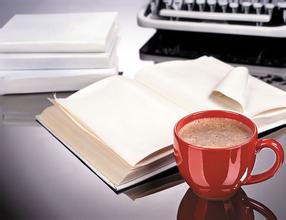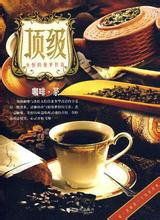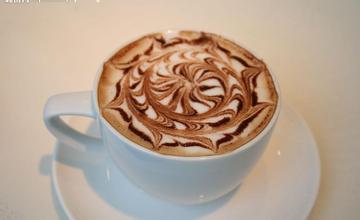Does the size of coffee powder affect the concentration of espresso?
Does the size of coffee powder affect the concentration of espresso?
The ideal time for coffee grinding is to grind it before cooking. Because ground coffee is easy to oxidize and lose its flavor, especially without proper storage, coffee powder is also easy to change flavor, so it is naturally impossible to cook mellow coffee.
The grinding prop for coffee beans is a grinder. There are numerous types of mills ranging from manual at home to large electric ones for business. Household grinders can also be used as decorations, and the number of people need more than one grinding, or electric to facilitate.
According to the structure of the grinder, there are grinders that use vertical and horizontal groove blades to cut coffee beans and those that grind coffee with molars. Each has its own advantages, and the situation of business use tends to mass production of the electric type as the mainstream.
However, the following two points should be paid most attention to when grinding coffee beans:
The friction heat of ① is suppressed to a minimum. (the aroma will fly away because of the fever)
Whether the size of ② particles is uniform or not. (if the particles are uneven, the concentration will be uneven.)
Taking this as a consideration, if you are a household mill, you should rotate it gently and take care to avoid friction heat as much as possible. Therefore, it is more appropriate to use electric grinders.
Whether espresso is successful or not can only reach 51% accuracy by looking at the flow rate, color or the number of seconds of reading, and it must be tested in person before it is safe. Although the visual method is not very accurate, there is a visual table for reference.
First, for thicker bean powder, the soaking time can be longer; otherwise, it will be shorter.
Second, if the water temperature is high, the beans will be thicker and the soaking time will be shorter.
Third, the water temperature is low, the beans are ground finer, and the soaking time is longer.
Fourth, shallow baked beans are finer than deep-baked beans, with good taste and extract a little more regional flavor of beans. According to my suggestion at four o'clock, beans are not easy to scorch, the flavor of beans is easy to highlight, and the failure rate is lower.
Under normal circumstances, the fineness of coffee is inversely proportional to the extraction time and the extraction rate. It can be proved from hand brewing and espresso that the coarser the powder is, the smaller the extraction resistance is, the greater the flow rate is, the shorter the extraction time is, the lower the extraction rate is, and the lighter the taste is.
On the contrary, the finer the powder is ground, the greater the extraction resistance is, the smaller the flow rate is, and the longer the extraction time is, the higher the extraction rate is and the stronger the flavor is.
However, professional baristas will go against the trend and try to shorten the extraction time slightly when they encounter finer coffee powder, so as to avoid making bitter coffee with too high extraction rate. On the contrary, if you encounter coarser coffee powder, you will try to prolong the extraction time slightly, so as to avoid insufficient extraction and make insipid coffee.

Important Notice :
前街咖啡 FrontStreet Coffee has moved to new addredd:
FrontStreet Coffee Address: 315,Donghua East Road,GuangZhou
Tel:020 38364473
- Prev

Flavor description of Sidamo Coffee introduction to the taste of grinding scale variety production area treatment method
Cedamo Coffee Flavor description Grinding scale Variety Regional treatment method Taste introduction Cidamo's grading standard is according to the defect rate, the less the number of defective beans in the same weight standard, the better the quality, the higher the grade! Generally divided into two and three levels (G2, G3), water-washed Sidamo because the treatment process is more perfect than the sun, so most of the G2 level exports are more.
- Next

How to describe the dry aroma of coffee? introduction to the regional treatment method for the characteristics of flavor and taste varieties
How to describe the dry aroma of coffee how to describe the flavor and taste characteristics of coffee varieties 1, planting altitude 2, raw bean size (sieve size Screen size) 3, coffee bean flavor 4, defective bean proportion, but different countries, there will be different benchmarks. For example, in Brazil, the benchmark of taste is as follows (from high price to low price): Strictly Soft Soft Softish H
Related
- What brand of black coffee is the most authentic and delicious? what are the characteristics of the flavor of the authentic Rose Summer Black Coffee?
- Introduction to the principle and characteristics of the correct use of mocha pot A detailed course of mocha pot brewing coffee is described in five steps.
- Which is better, decaf or regular coffee? how is decaf made?
- How much is a bag of four cat coffee?
- How about four Cat Coffee or Nestle Coffee? why is it a cheap scam?
- Which is better, Yunnan four Cats Coffee or Nestle Coffee? How about cat coffee? is it a fake scam? why is it so cheap?
- How about Cat Coffee? what grade is a hoax? which instant coffee tastes better, four Cat Coffee, Nestle Coffee or G7 coffee?
- Process flow chart of coffee making-Starbucks coffee making process what coffee tastes good at Starbucks
- The top ten best coffee beans in the world Rose summer coffee or Tanzanian coffee tastes good
- Yunnan four cat coffee is good to drink?_four cat coffee is a big brand? four cat blue mountain coffee is fake?

